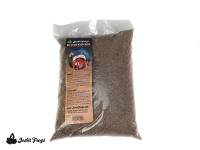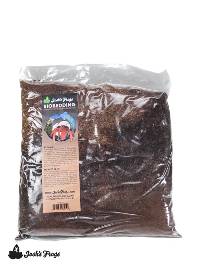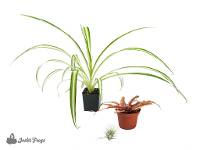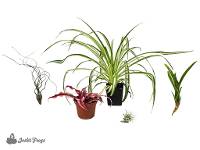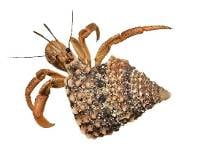Josh's Frogs
Taking Care of Your Hermit Crabs
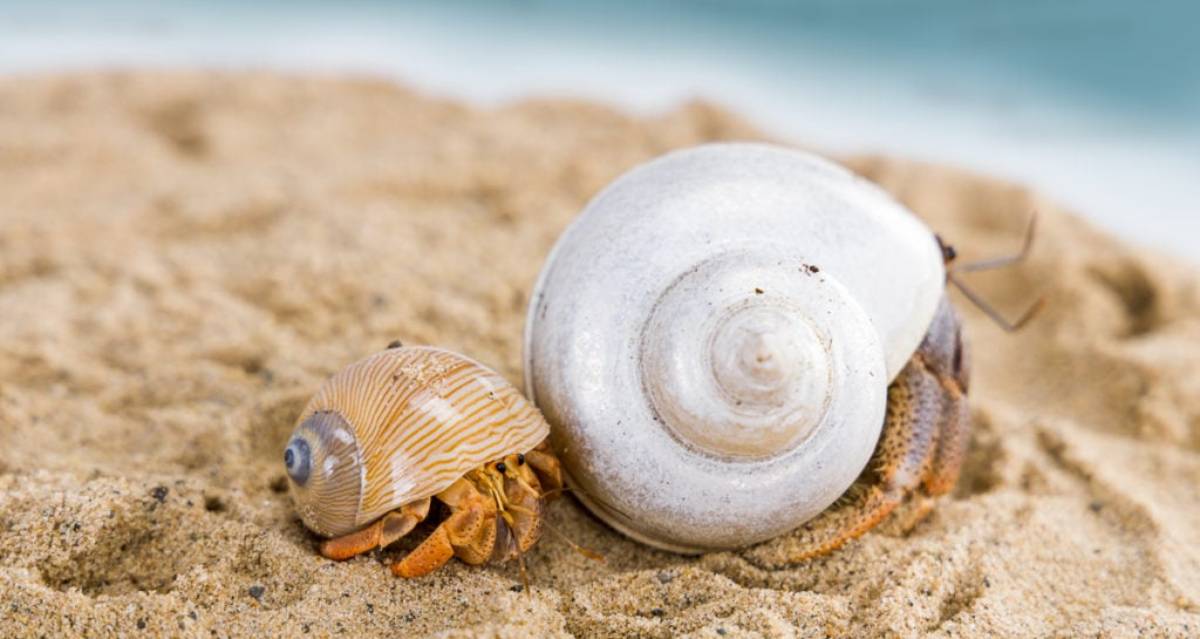
A Bit About Hermit Crabs
Hermit Crabs are terrestrial crustaceans, but are not hermits nor true crabs. In the wild, they live together in large groups, up to one hundred crabs. In fact, every crab you see at the store or at a beach shop comes from the wild as they are very difficult to breed in captivity. However, some people have accomplished this and maybe one day Josh's Frogs will too. For now, we have partnered with a dedicated hobbyist to bring you healthy, captive bred hermit crabs - check them out on the site now!
Basic Care
Home
The recommended minimum size for a crab habitat (or ""Crabitat"") is 20 gallons for two crabs, which is 10 gallons per crab. Four crabs can go in a 40 gallon, etc. Long tanks are preferred over tanks with height. This gives more surface area for the crabs to spread out and for all their necessities. Because of this, and for a few other reasons below, aquariums are more ideal than reptile tanks. But don't worry- There's an amazing use for your Exo Terra terrarium under ""Enrichment""!
Housing crabs in over-crowded or cramped conditions can lead to stress, aggression, or even death.
Substrate
This is arguably the most important step of setting up your Crabitat. It helps maintain humidity and provides a place to molt. Therefore, its depth and content play important roles.
Depth should be a minimum of 6"" and more may need to be added as the crabs get larger. They need to be able to completely cover themselves and the shell they take with them when they molt.
The substrate itself should be sand castle-like in consistency. The most common materials for this are a 5:1 ratio of natural sand and coco fiber. Calcium sand should never be used, as it hardens when wet and will not hold its shape well for burrowing and molting. Without a doubt, your best option for hermit crab substrate is Josh's Frogs BioBedding HERMIT CRAB. It's the perfect substrate for your bioactive hermit crab enclosure! This substrate is a unique blend of ingredients designed to jump-start the bioactive environment. It helps to maintain a proper level of humidity, yet retains moisture in a way to easily provide humid hides, support burrowing and foster a community of cleaner invertebrates and beneficial organisms.
Learn more about safe substrate options in our blog.
Lighting
Hermit Crabs do not need any special lighting, though some may use UVB lighting to mimic natural sunlight. This should only be done if there is a glass lid and keeping the humidity up is not a problem. Otherwise, any basic LED light may be used as a viewing light, especially ones that do not get as hot. However, there may not be much to see! Crabs are more active at night, so a nightlight bulb would allow you to view in the dark. This should not be on all night when used with a heating pad, just for viewing.
Temperature
Since Hermit Crabs are from a tropical climate, they require warm temperatures - between 75-85 degrees. A temperature gradient is recommended so the crabs can choose how warm they want to be. The best way to provide this is with tank heating pads placed on the outside side(s) of the tank, not underneath it. (This can overheat molting crabs). Generally, you want a heating pad that can cover the back of the tank from the rim to the top of the substrate, but you may be able to get away with a smaller one in warmer climates.
Be sure to monitor the temperature in the day and in the night to make sure the tank isn't too hot or too cold. Thermostats will help make sure your tank never gets too hot.
Humidity
Did you know Hermit Crabs have gills? While this doesn't mean they can breathe underwater, it does mean they need high humidity or else they may suffocate! Humidity of 70-80% is ideal, but can be hard to achieve in containers with any ventilation. Glass lids (or thick plastic) are recommended over screen lids. However, screen lids are acceptable in warm, humid climates when the levels in the room are naturally high.
Humidity above the ideal range can lead to condensation which will make the substrate too wet (which may cause flooding). Be sure to check the humidity levels often. Keep reading for tips on how to increase humidity!
Water
These complex little creatures need both freshwater and saltwater pools to choose from. These pools need to be deep enough for your crabs to fully submerge and allow them to climb out so they don't drown. A large textured rock, plastic plants, or plastic mesh are all good pool exit ramps. Zoo Med Repti Ramp Water Bowls already have a ramp built in!
Freshwater pools are simple. You can use tap water as long as you use a dechlorinator like Seachem Prime or Josh's Frogs Dechlorinator Tap Water Conditioner. If you'd rather use bottled water, be sure to buy spring water as it contains necessary minerals. This may still need to be conditioned. If you want to avoid using dechlorinator, distilled and R/O water are options, but they lack minerals so they need to be remineralized to be used as drinking water.
Saltwater pools add the extra step of adding ocean salt. Table salt is not acceptable. Josh's Frogs Hermit Crab Salt or Instant Ocean both work for saltwater pools. Tap water still needs to be dechlorinated, but distilled and R/O water do not need to be remineralized.
Sponges are not good for pools as they can grow bacteria. Add our Pool Bubbler Kit or Filtered Pool Kit to keep the water fresher longer and to increase humidity.
Food
Unfortunately, many commercial Hermit Crab pellets contain ethoxyquin and copper sulfate which are not safe for crabs. However, they aren't picky and will eat a wide range of organic options like fresh or dried fruits, veggies, nuts, seeds, and even meats! There's almost too many to list, but The Crab Street Journal thankfully did so here. Most ingredients can be found at the grocery store, but Josh's Frogs does offer a Hermit Crab Feeder Bundle and a suggested food category that only has safe food options.
Enrichment
Shells
Buying shells for your Hermit to change into is the most fascinating part about owning a Hermit Crab. However, there a a few things to take into consideration, like the size and type of Hermit Crab. You most likely have or will find:
 Ecuadorian Hermit Crab
in a Babylonia Shell
Ecuadorian Hermit Crab
in a Babylonia Shell
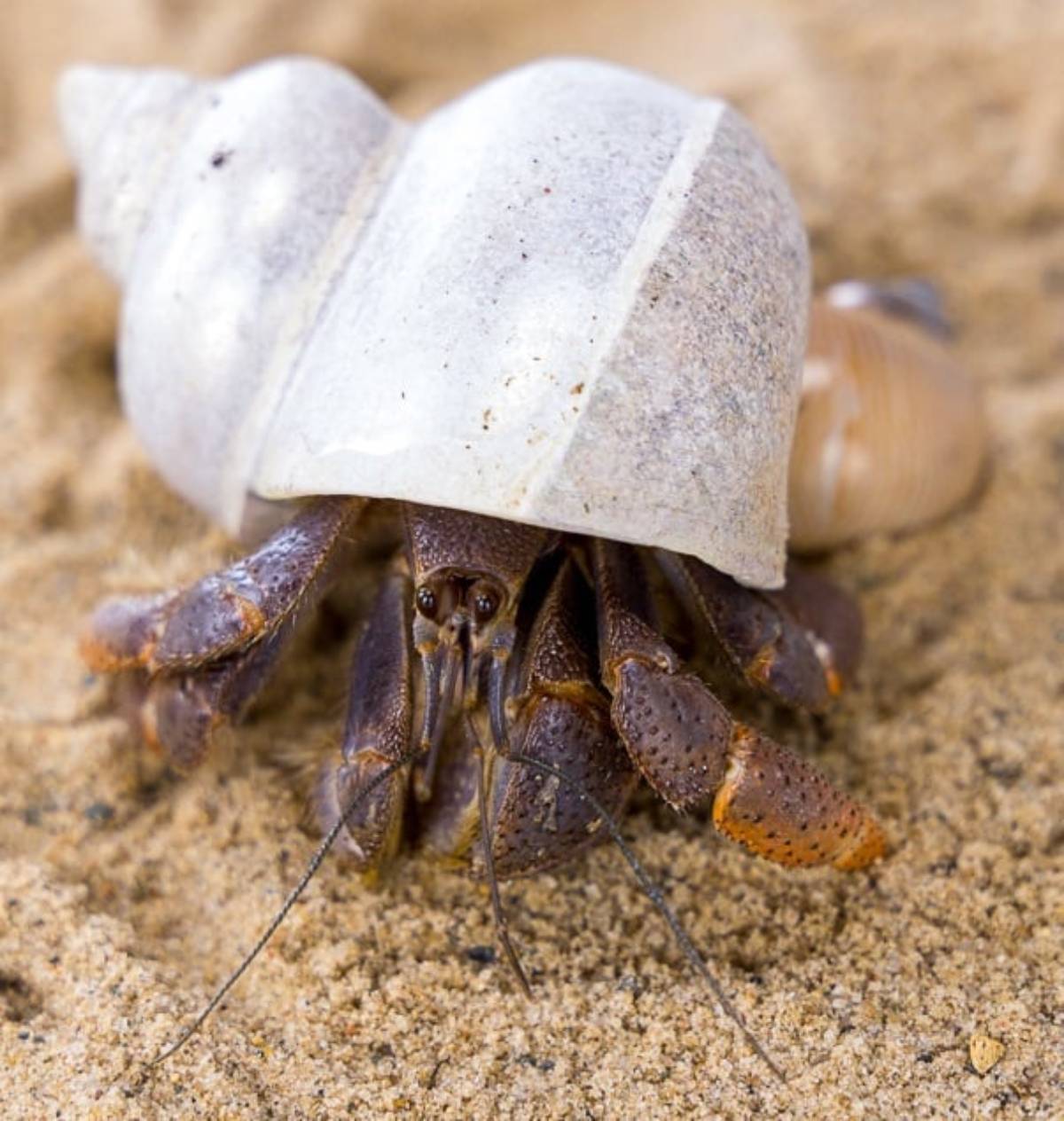 Purple Pincher Hermit Crab
in a pearlized Turbo Shell
Purple Pincher Hermit Crab
in a pearlized Turbo Shell
- Purple Pincher (Coenobita Clypeatus)
- Ecuadorian (Coenobita Compressus)
Different crab types like different shaped shells. It may take awhile to figure out what your crab likes, but one thing is for sure - they love having lots of choices! Offer at least 5 shells per crab that are about the same size opening or larger as the current shell . Having crabs of different sizes will help decrease shell envy so don't be afraid to mix smaller crabs with larger ones.
Avoid painted shells as the paint will chip with time and is toxic if eaten. Additionally, they usually ignore cone shaped, very spiky, very long, damaged or narrow opening shells.
Hiding
Hermit Crabs, being nocturnal creatures, will appreciate a cozy, safe place to take naps. Hides, placed directly on the substrate, will encourage natural burrowing behaviors. Beware of pine wood hides, as pine is toxic to hermit crabs. Cork Bark Tubes and upside down Cork Pots are safe natural wood hides.
Hanging hides with the addition of a ladder will be used too. Hanging glass globes with moss tucked inside or moss birdhouses are fun DIY projects! Use our Coco Rope to tie things together; it is mold resistant and chemical free.
Climbing
You will be amazed with the places you find your pets! Vines, rope ladders, bridges and fake foliage will maximize your tank space and provide entertainment to these naturally curious creatures. Manzanita, Cholla, Cork Flats, and cork branches are all safe woods for climbing as well.
Wondering what to do with your Exo Terra terrarium? Remove the lid and flip the tank upside down on top of your main Hermit tank! Using suction cups or Magnaturals, attach vines and ledges leading up into the inverted tank for the ultimate Hermit Crab setup. Having a feeding dish up there, along with one on ground level, encourages discovery and natural foraging behavior.
Bioactive
The top layer of the substrate can start to look messy after awhile. The hermits will drag food out of their dishes and, of course, leave droppings. This can occasionally be scooped and replaced with a fresh layer of soil, but There's something else that will clean up for you... Isopods! You may know these as pillbugs, woodlice, or roly-polies. These are a bit different though. Dwarf Tropical White Isopods and Porcellionides pruinosus (Powder Blue, Powder Orange, White Out, Oreo Crumble) are much smaller, do not roll up, and are bred as clean up crews for vivariums. They thrive in high humidity, breed quickly, and will occasionally become a live snack for your crabs. don't worry, they will not escape and are completely harmless.
Leaf litter is another great natural addition. It helps with humidity, creates hiding places for isopods so they aren't over-hunted, and can be snacks for the crabs. Live Oak Bark also works well combined with leaf litter.
Live plants are a debated topic in Hermit Crab keeping. Hermit Crabs will most likely try to eat anything put in with them and some plants are toxic. As well, plants with large root systems may interfere with molting crabs.
If you do want to try live plants, Chia seeds are widely accepted as they are non toxic and have shallow roots systems. Aquatic moss balls can go in freshwater pools with bubblers. A few acceptable tropical plants are air plants, spider plants, bromeliads, cryptanthus, parlor palm, most ferns, and calathea. Any others should be researched for toxicity and compatibility. Plants with large roots can be put in pots without holes. In very large tanks, plants may go directly in the substrate as they are less likely to take over.

